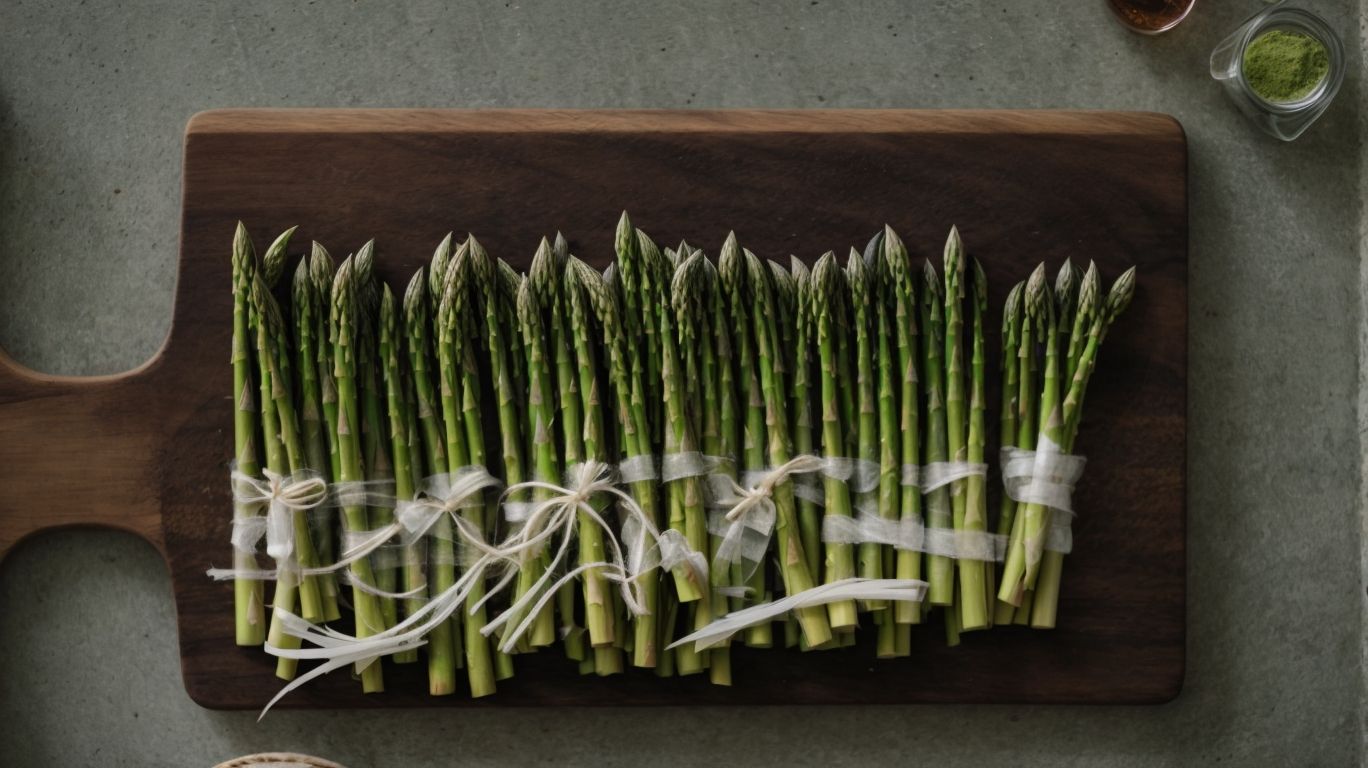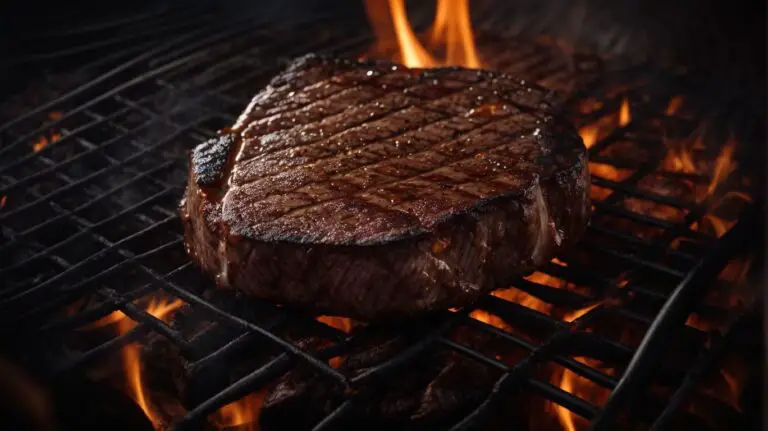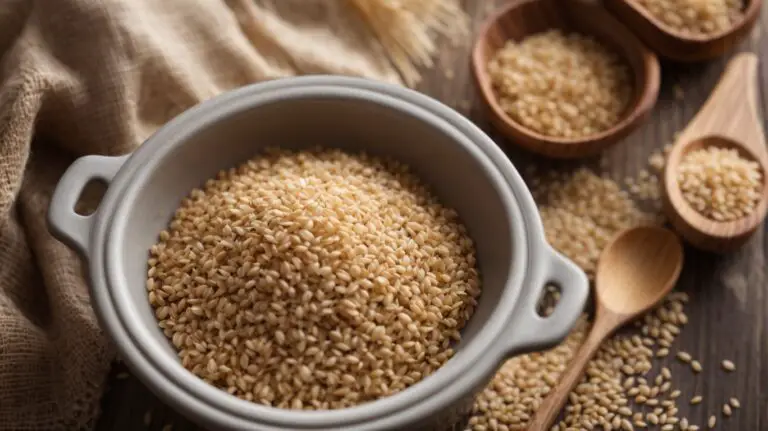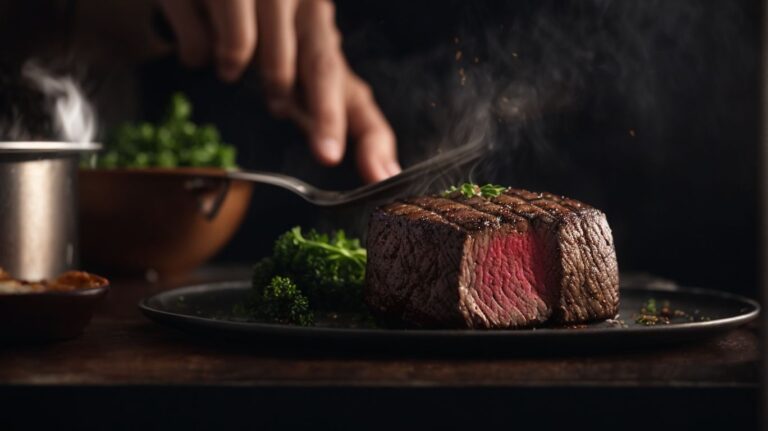How to Cook Asparagus After Freezing?
Looking to enjoy fresh asparagus all year round? Freezing this versatile vegetable is a great way to preserve its nutrients and flavor.
We explore the benefits of freezing asparagus, various methods for freezing it properly, and tips for cooking it after freezing. Whether you’re a culinary enthusiast or just looking to add more veggies to your diet, this guide will help you make the most of your frozen asparagus.
Let’s get started!
Key Takeaways:
Why Freeze Asparagus?
Freezing asparagus is a convenient way to preserve its freshness and nutritional value for future use.
When properly frozen, asparagus locks in its nutrients, flavors, and overall quality, ensuring that you can enjoy its benefits long after its harvest season. By having frozen asparagus at your disposal, meal preparation becomes more efficient and flexible. Whether you want to add it to soups, stir-fries, pasta dishes, or omelets, having this vegetable ready in your freezer eliminates the need for frequent grocery trips, saving you time and ensuring that you always have a nutritious ingredient on hand.
Frozen asparagus also makes it easier to experiment with different seasonings and cooking methods, enhancing the versatility of this vegetable in your kitchen. The convenience of having frozen asparagus allows you to enjoy its freshness year-round, no matter the season or availability in stores. So, the next time you come across fresh asparagus, consider stocking up and freezing some to enjoy its benefits whenever you desire!
What Are the Benefits of Freezing Asparagus?
Freezing asparagus helps in preserving its nutritional content, extending its shelf life, and maintaining its freshness and flavor.
When asparagus is frozen, it helps lock in essential vitamins and minerals, ensuring that you can enjoy all the health benefits even after weeks in storage. By preventing spoilage, you eliminate food waste and save money. The texture of frozen asparagus remains crisp and firm, especially when blanched before freezing. This process also helps retain the vibrant green color of the spears.
In terms of flavor, freezing asparagus with a touch of garlic salt and olive oil can enhance its taste profile, making it a versatile ingredient for various dishes. When you have frozen asparagus on hand, meal planning becomes a breeze as you can easily incorporate it into your favorite recipes without any hassle. The convenience of having frozen asparagus means you can enjoy this nutritious vegetable all year round, regardless of its seasonal availability.
Proper storage of frozen asparagus in airtight containers or freezer bags ensures that it stays fresh and delicious for an extended period. Whether you use it as a side dish, in salads, stir-fries, or soups, frozen asparagus offers a quick and easy way to add a nutritious touch to your meals.
What Are the Different Methods of Freezing Asparagus?
There are various methods to freeze asparagus, including blanching, sautéing, and air frying, each offering unique results.
Blanching is a popular technique for freezing asparagus as it helps lock in the vibrant green color and nutrients of the vegetable. To blanch asparagus, start by preparing an ice bath to immediately cool the blanched asparagus and stop the cooking process. After blanching in boiling water for a couple of minutes, submerge the asparagus into the ice bath for about the same duration. This method will ensure that your frozen asparagus retains its freshness and taste.
- Sautéing asparagus before freezing not only adds flavor but also helps in preserving some of the natural crunch. Begin by heating a pan with olive oil, garlic, and your preferred seasonings. Cook the asparagus until it’s slightly tender but still retains a crisp texture. Once cooled, you can freeze the sautéed asparagus to enjoy the enhanced flavors during later use.
- Air frying asparagus is another innovative way to freeze this vegetable while achieving a crispy texture. Coat the asparagus with olive oil and seasonings before air frying them until they turn crispy and golden brown. The air frying method locks in the flavors and creates a delightful crispy exterior that can be enjoyed even after freezing.
How to Properly Freeze Asparagus?
Properly freezing asparagus involves selecting the right containers, preparing the vegetable correctly, and ensuring optimal storage conditions.
In terms of choosing containers for freezing asparagus, opt for airtight plastic bags or containers that are freezer-safe to maintain freshness.
Prepping the asparagus for freezing requires washing, trimming off the tough ends, and blanching to preserve its taste and texture.
Ahead of freezing, lay out the asparagus in a single layer on parchment paper-lined trays for quick freezing, preventing pieces from sticking together. Remember, proper packaging is key to safeguarding the flavor and quality of the frozen vegetables.
Always label the containers with the date and content to keep track and prevent any mix-ups. Store the frozen asparagus at a consistent temperature to ensure it stays at its best for future meals.
What Are the Steps for Freezing Asparagus?
To freeze asparagus, begin by washing and trimming the spears, blanching them briefly, then cooling and packaging them for storage.
After washing and trimming the asparagus, it is crucial to blanch them in boiling water for approximately 2-3 minutes. This blanching process helps to preserve the asparagus’s vibrant color and crisp texture. Once blanched, immediately transfer the asparagus to an ice bath to halt the cooking process and retain their freshness.
Proper packaging is essential for maintaining the quality of frozen asparagus. Seal the cooled spears in airtight containers or
- ziplock bags
to prevent freezer burn and preserve their flavor.
What Are the Best Containers for Freezing Asparagus?
For freezing asparagus, opt for airtight containers, freezer bags, or vacuum-sealed pouches to prevent freezer burn and maintain freshness.
In terms of freezing asparagus, the right storage solution is crucial to preserve its quality and flavor. Freezer bags are convenient and easy to use, allowing you to seal the asparagus securely while taking up minimal space in your freezer. On the other hand, vacuum-sealed pouches offer superior protection against freezer burn by removing excess air, ensuring the asparagus stays fresh for longer periods.
- Proper insulation is key to safeguarding the roasted asparagus. Make sure to wrap it tightly before storing, especially if you’ve cooked it in a skillet.
- Following the right instructions for freezing asparagus can make a significant difference in the final taste and texture when you decide to use it. By choosing the best container for your needs, you can enjoy delicious asparagus dishes even during the off-season.
How to Thaw Frozen Asparagus?
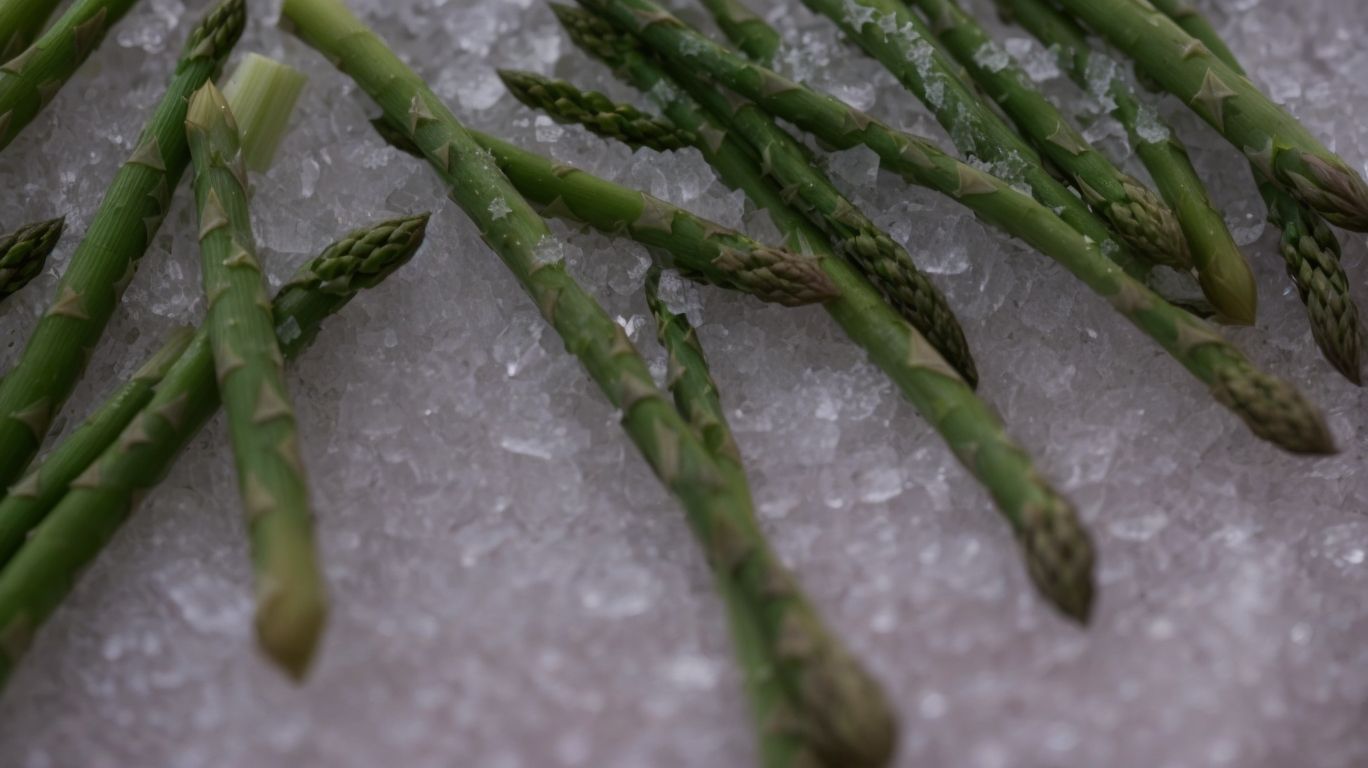
Credits: Poormet.Com – Christian Miller
Thawing frozen asparagus can be done through methods such as refrigeration, cold-water submersion, or microwave defrosting to preserve its texture and taste.
Refrigeration is a slow yet effective method that helps maintain the asparagus’s tender texture and original flavors. Simply place the frozen asparagus in the refrigerator overnight, and it will gradually thaw without compromising its quality.
Cold-water submersion is a quick technique where you seal the asparagus in a plastic bag and immerse it in a bowl of cold water. This method accelerates the thawing process while still keeping the asparagus tender.
Microwave defrosting is a convenient option for those short on time. Remember to use the defrost setting or low power to ensure gentle thawing, preventing the asparagus from becoming mushy.
What Are the Different Thawing Methods for Asparagus?
Thawing asparagus can be accomplished using methods like oven roasting, skillet heating, or air frying to bring out its natural flavors and textures.
In terms of thawing asparagus, oven roasting is a popular choice for many cooks. This method not only speeds up the thawing process but also enhances the flavors of the asparagus, giving it a slightly caramelized edge. The gentle heat from the oven helps retain the nutrients and freshness of the asparagus, ensuring a delicious and nutritious dish.
- Skillet heating is another method that provides a quick and convenient way to thaw asparagus. The direct heat from the skillet helps to retain the crispness of the asparagus while bringing out its natural sweetness. This method is ideal for those looking for a speedy preparation without compromising on taste.
- For those craving a crunchy texture, air frying offers a unique approach to thawing asparagus. The hot circulating air in the air fryer results in a crispy exterior while maintaining the tenderness inside. This method not only locks in the flavors but also creates a delectable crunch that elevates the eating experience.
How Long Does It Take to Thaw Asparagus?
The time required to thaw asparagus varies based on the method used, with oven roasting taking around 15-20 minutes for a crispy texture.
For skillet heating, a quicker alternative, you can achieve similar results in approximately 10 minutes by stirring occasionally for even cooking. Adding a drizzle of olive oil and a sprinkle of garlic salt can enhance the flavors as the asparagus thaws.
On the other hand, if you opt for air frying, the asparagus can stay tender on the inside while getting a delightful crunch on the outside within just 8-10 minutes of cooking time. Seasonings like pepper or parmesan cheese can be added during the thawing process to infuse extra taste.
How to Cook Asparagus After Freezing?
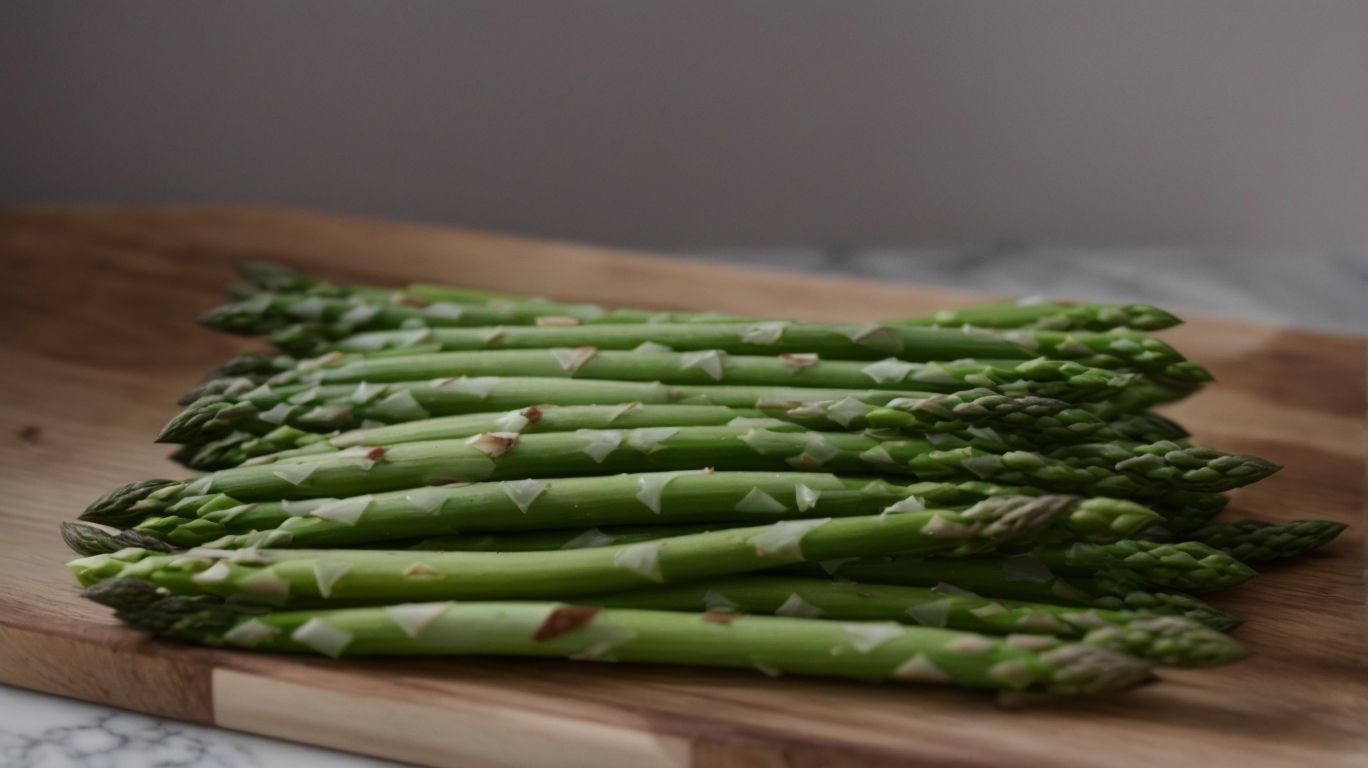
Credits: Poormet.Com – Jeffrey Lopez
Cooking frozen asparagus offers versatility with methods like roasting, sautéing, or air frying to bring out its delicious flavors and retain its nutritional value.
Roasting frozen asparagus is a fantastic way to develop rich flavors and enhance its natural sweetness. Simply toss the spears with olive oil, garlic, salt, and pepper, then roast in a preheated oven until tender and slightly caramelized.
Sautéing is another quick and easy option for cooking thawed asparagus. Heat a pan with olive oil, add the asparagus along with your favorite seasonings, and cook until the spears are tender but still slightly crisp.
If you’re looking for a crispy finish, consider using an air fryer to cook thawed asparagus. Lightly coat the spears with olive oil and seasonings, then air fry until they are crispy on the outside and tender on the inside.
What Are the Different Cooking Methods for Frozen Asparagus?
Cooking frozen asparagus can be done through delightful recipes like lemon garlic asparagus, roasted red pepper asparagus, or parmesan-crusted asparagus for a flavorful meal.
When preparing lemon garlic asparagus, you can infuse the dish with a zesty tang by grating fresh lemon zest and adding minced garlic to olive oil before tossing the asparagus in the mixture. For roasted red pepper asparagus, consider adding roasted red pepper strips during the last minutes of baking for a smoky sweetness.
The parmesan-crusted asparagus offers a crispy twist – coat the asparagus spears with breadcrumbs seasoned with parmesan, garlic powder, and a dash of black pepper before baking until golden brown.
Tips for Cooking Asparagus After Freezing
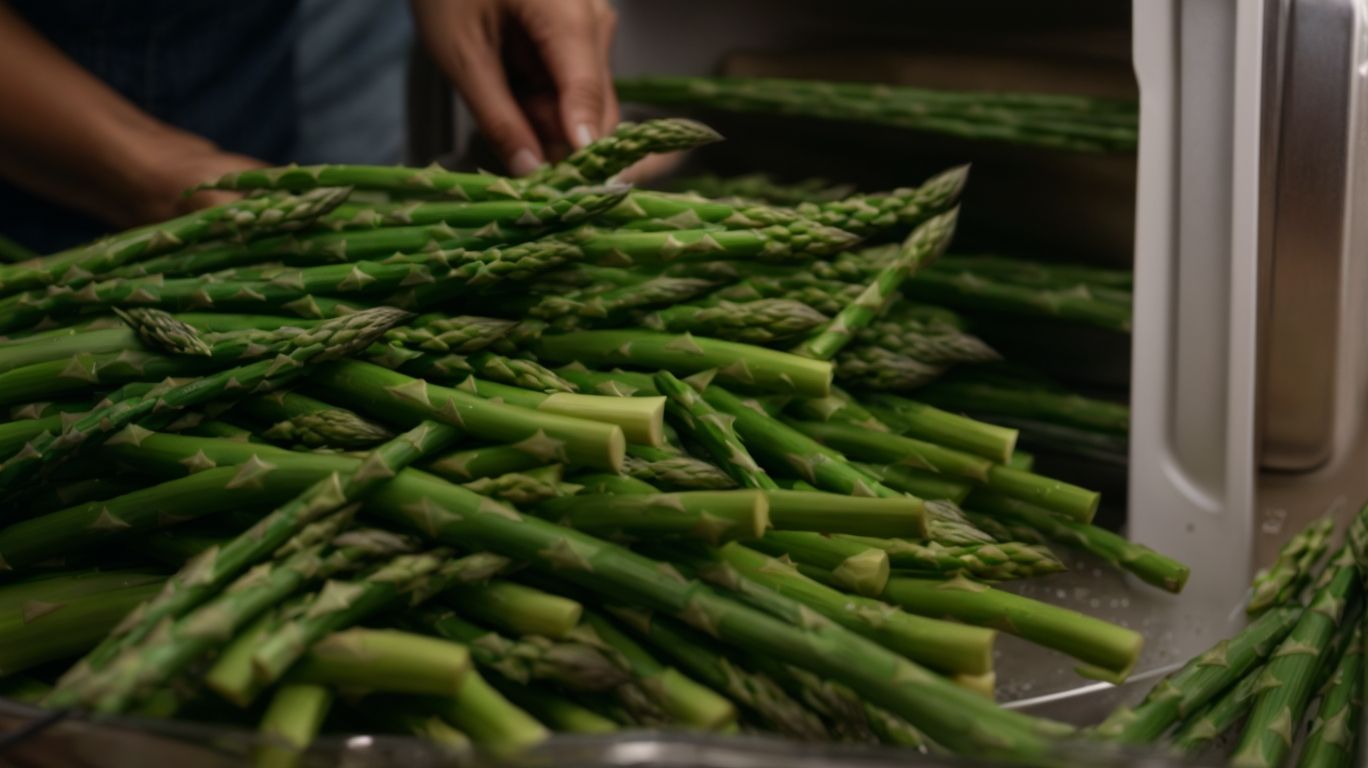
Credits: Poormet.Com – Adam Martinez
To ensure optimal results when cooking frozen asparagus, it is essential to prevent freezer burn by using proper packaging and storage techniques.
Freezer burn can affect the taste and texture of asparagus, so once thawed, it’s crucial to minimize exposure to air.
Before cooking, consider roasting the asparagus in the oven with a light drizzle of olive oil and a sprinkle of salt and pepper for added flavor.
Investing in high-quality storage containers can help maintain the asparagus’s freshness by sealing out excess moisture.
How to Preserve the Nutrients and Flavor of Asparagus After Freezing?
Preserving the nutrients and flavor of asparagus after freezing involves proper storage in airtight containers, avoiding temperature fluctuations, and consuming the thawed asparagus within a reasonable timeframe.
When freezing asparagus, ensuring that it retains its nutritional value and taste is vital for enjoying it later on. Placing the frozen asparagus in airtight containers will protect it from freezer burn and off-flavors. Consistent temperatures are key to maintaining the vegetable’s freshness; avoid placing it near the freezer door where temperatures fluctuate.
- Remember, seasonings can also enhance the taste post-thawing, so consider adding them before freezing
- Avoid overcrowding the storage space to allow proper airflow which aids in preserving the asparagus’s texture and flavor
Timely consumption is crucial once the asparagus is thawed to experience optimal quality – this means using it within a few days to reap the benefits of its nutrition and taste. By paying attention to these storage methods and conditions, you can enjoy delicious asparagus long after the harvest season.
Conclusion
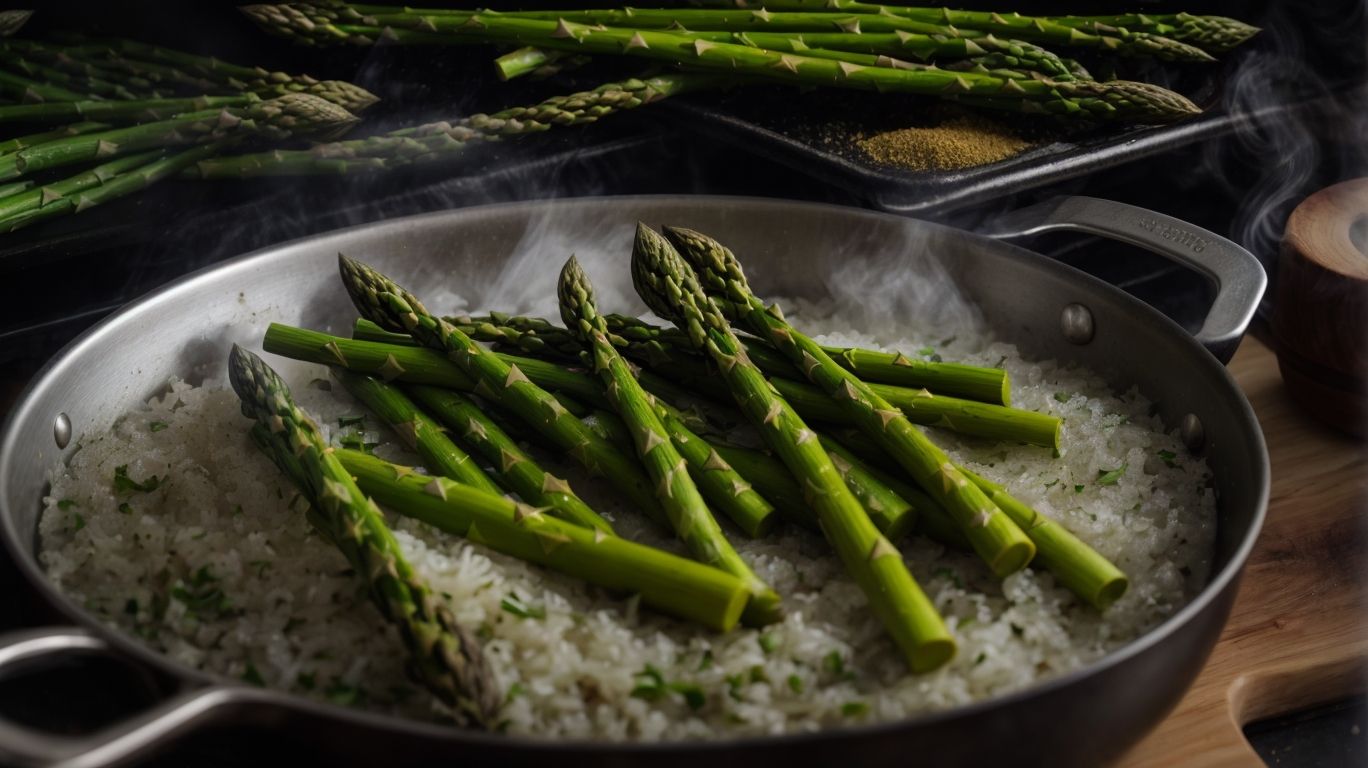
Credits: Poormet.Com – Raymond Baker
Freezing and cooking asparagus offers a convenient way to enjoy this nutritious vegetable year-round with a variety of delicious recipes and methods.
When you freeze asparagus, you preserve its freshness and lock in vital nutrients, making it a smart choice for extending its shelf life. Thawing frozen asparagus is a breeze, allowing you to effortlessly include this versatile veggie in soups, salads, stir-fries, and more. Cooking asparagus brings out its natural flavors and textures, whether you opt for roasting, grilling, or sautéing. With the oven being a popular choice, you can easily whip up a delectable asparagus recipe to complement any meal.
Final Thoughts and Recommendations
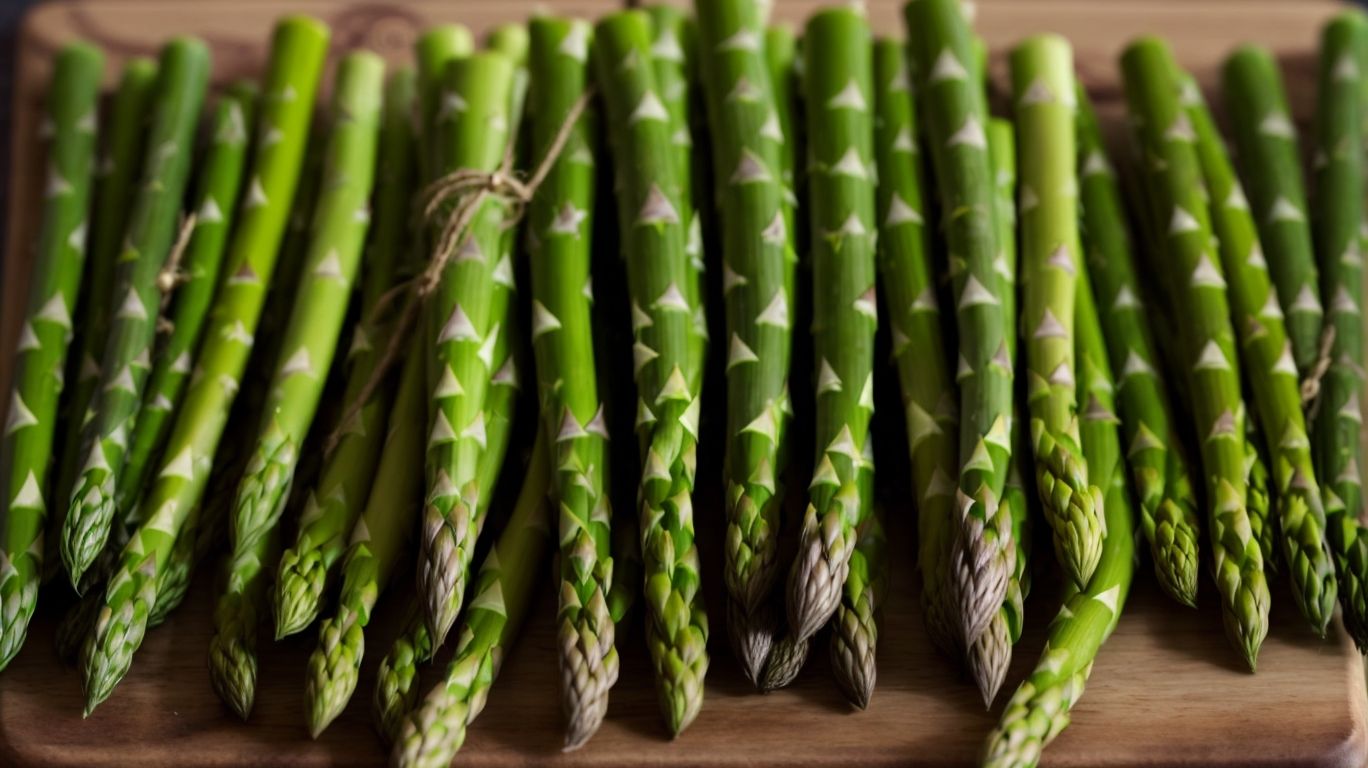
Credits: Poormet.Com – Anthony Thompson
As we wrap up, remember that freezing asparagus can be a time-saving and practical solution for preserving this vibrant vegetable for future culinary delights.
Frozen asparagus retains its nutritional value exceptionally well, ensuring that you can enjoy all the health benefits even when it’s not in season. It’s a great addition to your kitchen arsenal for quick and easy meal prep. Incorporating frozen asparagus into your dishes is not only convenient but also a smart choice for boosting your daily intake of essential vitamins and minerals. From stir-fries to omelets, salads to pasta dishes, the possibilities are endless when it comes to cooking with asparagus.

